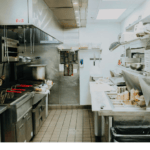The superlatives about the past year are unending. We’ve seen anxieties at an all-time high and productivity being challenged as job loss, health issues, and overall fatigue have characterized the pandemic. Navigating these turbulent times has been especially taxing on the creative community.
According to WeTransfer’s Ideas Report, ~55% of people surveyed noted they have had the same or fewer creative ideas than normal during the pandemic. On the American Advertising Federation of North Dakota Board, we’ve heard much of the same from our members. We’re all feeling worn out, less engaged, and suffering through some creative blocks.
To liven up the spirits of our members, we brought in Matthew Emerzian (from Every Monday Matters) to speak to our group in mid-January. Matthew’s mission is to inspire more good in the world by sharing his story
of internal battles with mental health and how he’s been able to rebuild. His speech on the importance of emotional intelligence, particularly in relation to the lives of creatives, inspired the creation of this article.
Tip #1: Practice Routine
One of the key pillars of emotional intelligence that Matthew focused on was self- management. This refers to one’s ability to identify their emotions, take control of their actions and control their impulses. As it relates to creativity, one of the best ways to practice this skill is to build positive routines.
According to the European Journal of Social Psychology, it takes 66 days for new behavior to become automatic. Building a solid routine is an important step when it comes to breaking out of your creative rut. Some ideas to consider that implement creativity into your routine would be journaling, meditating, or sketching. Whatever your creative field or interest is, dedicate time to that every day and you’ll find ways to escape the ruts that can plague you.
Robert Henri once said, “The object isn’t to make art, it’s to be in that wonderful state which makes art inevitable.” Building positive habits and a routine that works for you will help transform your creative endeavors into daily practices.
Tip #2: Find Collaborators
Creative ruts can be more common when you’re isolated in your endeavors. If you find creatives with similar interests as yours, you can effectively build a sense of community and a braintrust to discuss ideas with.
Another pillar of emotional intelligence that Matthew discussed was “relationship skills.” As humans, we have an innate need for relationships with others. In the creative world, it’s no different. Finding others with whom you can share ideas, work through creative problems, and come to innovative solutions can help you break out of the creative blocks you experience.
86% of employees and executives cite lack of collaboration as a reason for workplace failures (via Salesforce). This signals the importance of idea sharing in increased productivity and success for creatives. If you’ve been looking for a group to share your ideas with, look no further than our AAF-ND membership. We’d love to lend a hand of support in brainstorming creative ideas or providing guidance to help stave off your creative rut.
Tip #3: Listen to Your Needs
When you’re feeling a lack of creative productivity, pressing yourself doesn’t do anyone favors. This brings us to another pillar of EQ that Matthew discussed: “self-awareness.” Self-awareness refers to your ability to understand your emotions and beliefs, and make a connection between those beliefs and your actions.
In the creative process, it’s fundamentally important to be aware of your needs and adjust accordingly. If your mind needs rest, let it. If you know your process requires more time, prioritize appropriately. Being in tune with your own emotional needs as it relates to your creative endeavors will help you plan out projects correctly and cater to your creative process the way you need.
To improve your ability to understand your creative process, consider charting out examples of the times you’ve felt most productive. Perhaps it was a project that had great results or a creative piece you were particularly proud of. How did you get started? How much time did it take? What kind of feedback did you seek along the way? Use this as a template for building out your ideal creative process and budget enough time for mental breaks as you need.
Since the dawn of time, creativity has served the value of providing light to our worlds, and it’s important that you continue to prioritize the creative ambitions that make up your world. Whether it’s designing murals, solving complex business problems, or improving your culinary skill – we all employ principles of creativity in our lives. Making sure that you’re taking care of your mental health and allowing your creativity to flourish is an important practice in self-preservation. We’d love to have you join our creative circle by attending an AAF-ND Event. Visit here to learn more about how you can get involved!








